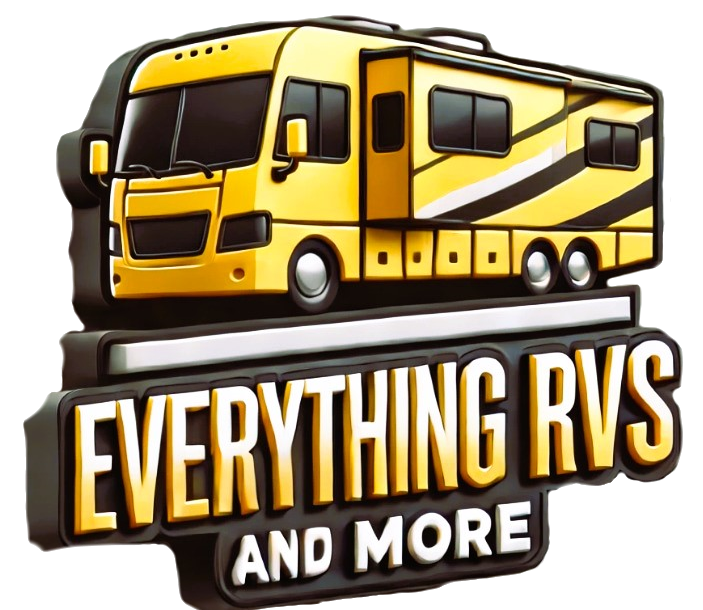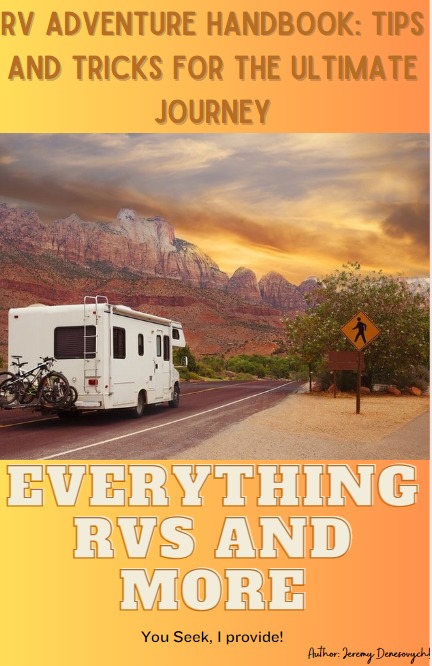Affiliate Disclosure: I earn commissions if you shop through the links below at no additional cost to you.
Last Updated on October 4, 2024 by Jeremy
When you hit the road in your RV, feeling the freedom and adventure is top of the list, right? But, hold up – ever thought about how your electric setup holds up? If you’re pitching up at various campgrounds, chances are you’re plugging into power sources that might have some unexpected surprises waiting. Electrical surges happen more often than you’d guess, and without protection, your RV’s fancy electronics could be at risk.

RVers might think about surge protectors as an accessory, but they’re more like a necessity. These gadgets act like the unsung heroes of your electrical system. They sense any spike in electricity and cut the connection faster than you can say “power surge,” keeping your appliances out of harm’s way. Just imagine cruising without a functioning microwave or worse, finding out your new smart TV’s fried because of a voltage spike!
It’s not just rumor – actual RVer stories show how a minor power surge toasted their setup, leading to costly repairs. Out in the wilderness, the last thing you need is extra stress about whether your gear will work the next time you stop.
Investing in a surge protector could be the difference between a chill journey and a west coast tour full of fried appliances. Plus, they don’t just guard, they give insight with nifty features like digital displays, showing voltage levels and automatic shut-off, so you always know what’s going down with your power.
Introducing the Kohree RV Surge Protector 30 Amp, 10000 Joules
When it comes to keeping your RV electrics safe, the Kohree RV Surge Protector 30 Amp, 10000 Joules stands out. This trusty defender packs a punch with its high joule rating, which is basically the measure of energy it can absorb. More joules mean more protection against those unwanted electrical spikes.
Kohree’s 30 Amp protector is perfect for the typical RV setup, handling the quirks and jolts of campground power sources. It’s got all the cool features you need, like weather-resistant housing because, let’s face it, weather can be unpredictable. Plus, with LED indicators, you’re always in the loop about your connection’s health. No more guessing if you’re road-ready; it’s all about equipment that pulls its weight on your adventure.
Stacking Kohree against other brands, this one’s a champ in both price and safety features. It’s not only about the dollar bills saved in potential damage but the peace of mind knowing you’re covered. Compare it with others, and you’ll see why it’s a solid choice for most RVers.
Interested in seeing exactly how it holds up? Check out the product’s details directly through the affiliate link:
RV Surge Protector 30 Amp, 10000 Joules – $66.99. Just click and see what this gadget’s all about!
Pros and Cons of the Kohree 30 Amp RV Surge Protector
The Kohree 30 Amp RV Surge Protector definitely has its perks. First up, it’s reliable. Many RVers rave about how it has saved their electronics more than once. The peace of mind it brings is worth its weight in gold.
One of its standout features is the clear LED indicators. They aren’t just there for show – they provide essential real-time data about power conditions, something that’s pretty handy when you’re unsure about a power source.
Another tick in Kohree’s favor is its weather-resistant build. Whether you’re parked up in the sunny south or enduring wet Pacific Northwest days, this gadget stands strong. Plus, it’s relatively lightweight and portable, making it easy to stow away when not in use.
On the flip side, a few users note that the unit can be somewhat bulky, especially when space is a premium in some setups. Others mention occasional false readings on the LED display, but these are reported less frequently.

Overall, user reviews mostly back up that the pros outweigh the cons. The Kohree surge protector does its job efficiently, and even those minor issues don’t undermine its overall value. For the price, it’s a solid, trustworthy addition to your RV gear must-haves.
Making the Right Choice: 30 Amp vs 50 Amp Surge Protectors
Choosing between a 30 Amp and a 50 Amp surge protector can feel like a bit of a puzzle. It’s all about understanding your RV’s needs and its electrical appetite. Most smaller or mid-sized RVs run just fine with a 30 Amp setup, while the larger rigs – think more appliances and gadgets – usually require a 50 Amp connection.

Here’s the deal: a 30 Amp system offers about 3,600 watts of power, which is plenty for the basics. However, if you’ve got big energy-hungry appliances, you might want to consider the 50 Amp, providing a whopping 12,000 watts. That’s like giving your RV an energy booster shot!
The decision often boils down to your travel habits and what you’re powering up regularly. Full-timers with a load of tech or luxury appliances might lean towards the 50 Amp for peace of mind. Weekend warriors might find the 30 Amp is more than capable, especially if they’re not running multiple heavy-duty devices at once.
Cost and safety are significant factors, too. A 50 Amp surge protector can be pricier but offers broader protection if your RV setup demands it. If unsure, check your RV’s manual or consult with an electrical expert to avoid overloading or under-utilizing your power capabilities.
Talking to fellow RVers or checking out online forums can also provide some great insights and real-world experience. The key is determining what fits your rig and lifestyle best, ensuring you have a reliable power supply whenever and wherever your journey takes you.
Ease of Use and Installation of Kohree Surge Protector
Getting your Kohree surge protector up and running is straightforward, even if you’re not a tech whiz. The first step is to ensure the power’s off at the source. Sounds obvious, but it’s an easy thing to overlook in the excitement of setting up.
Once the power’s off, plug the surge protector into the campground’s pedestal, making sure it’s secure. Next, connect your RV’s power cord to the surge protector. Hit the switch to power up, and you’re all set. You’ll see those LED indicators light up, letting you know everything’s good to go.

What’s cool about the Kohree model is that it’s user-friendly. The indicators are easy to understand, giving you a quick read on voltage levels. This way, you’ll immediately know if there’s something off with the power source before it reaches your RV.
Avoid mistakes like plugging in the protector while the source is still live. Not only can this damage the unit, but it might also surprise you with a nasty jolt. If there’s ever any issue, referring to the manual can be a lifesaver. Kohree also offers solid customer support when or if additional help is needed.
Getting familiar with your surge protector and its installation process is key in ensuring a safe and successful setup each time. It quickly becomes second nature, part of your regular routine whenever you roll up to a new spot.
Conclusion: Why the Kohree 30 Amp is a Top Choice for RV Enthusiasts
Hitting the road in your RV is all about embracing the freedom and thrill of the open road. But, while you’re chasing adventure, don’t forget to safeguard your rig’s electrical system. The Kohree 30 Amp Surge Protector has earned its place as a must-have for RVers, thanks to its tough-as-nails build, ease of use, and dependable protection.
Whether you’re hopping from campground to campground or boondocking in remote spots, this surge protector is designed to handle unpredictable power sources. With countless RVers backing up its performance and durability, it’s clear that the Kohree 30 Amp has your back in all kinds of weather and conditions.

Still wondering if it’s worth it? Don’t just take my word for it—check out my personal review in this video, where I dive deep into real-world usage and show how this protector keeps my electronics safe. You’ll see why the Kohree is trusted by so many fellow nomads.
Ready to protect your RV’s precious gear? Click the button below to grab yours today. With the Kohree 30 Amp Surge Protector in your setup, you can focus on the adventure ahead—without the worry of electrical mishaps. Happy travels!





.jpg/:/cr=t:5.56%25,l:0%25,w:100%25,h:88.89%25/rs=w:1240,h:620,cg:true)



Leave a Reply